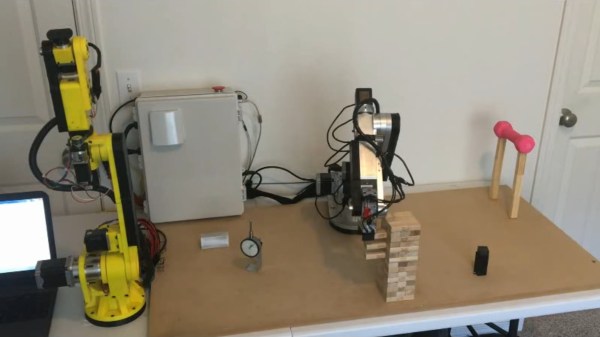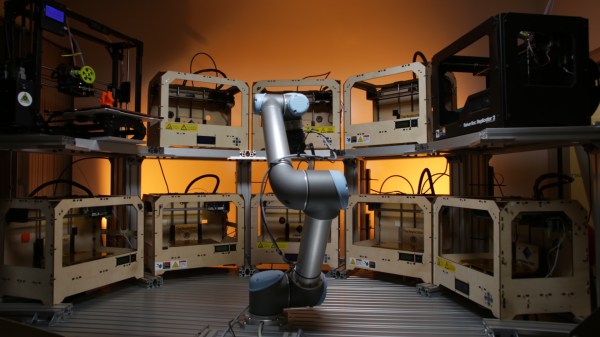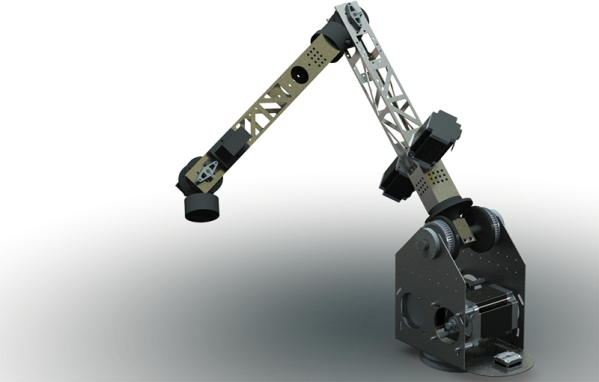[igarrido] has shared a project that’s been in the works for a long time now; a wooden desktop robotic arm, named Virk I. The wood is Australian Blackwood and looks gorgeous. [igarrido] is clear that it is a side project, but has decided to try producing a small run of eight units to try to gauge interest in the design. He has been busy cutting the parts and assembling in his spare time.
Besides the beautifully finished wood, some of the interesting elements include hollow rotary joints, which mean less cable clutter and a much tidier assembly. 3D printer drivers are a common go-to for CNC designs, and the Virk I is no different. The prototype is driven by a RAMPS 1.4 board, but [igarrido] explains that while this does the job for moving the joints, it’s not ideal. To be truly useful, a driver would need to have SCARA kinematic support, which he says that to his knowledge is something no open source 3D printer driver offers. Without such a driver, the software has no concept of how the joints physically relate to one another, which is needed to make unified and coherent movements. As a result, users must control motors and joints individually, instead of being able to direct the arm as a whole to move to specific coordinates. Still, Virk I might be what’s needed to get that development going. A video of some test movements is embedded below, showing how everything works so far.
Continue reading “Wood Shines In This SCARA Robotic Arm Project”

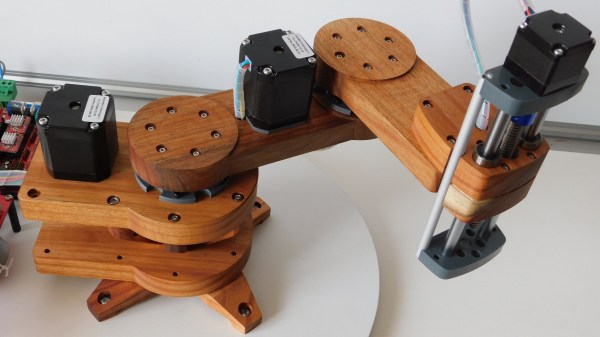
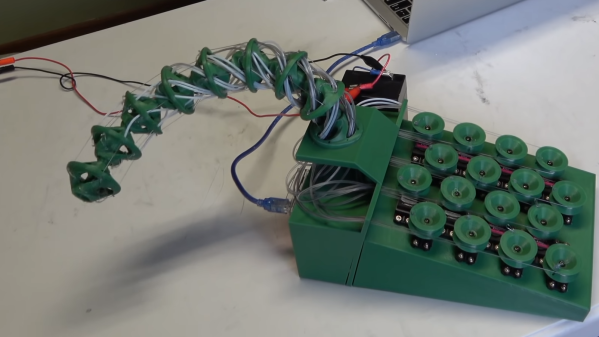
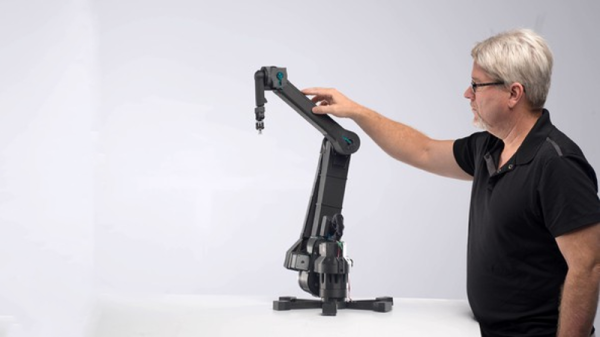



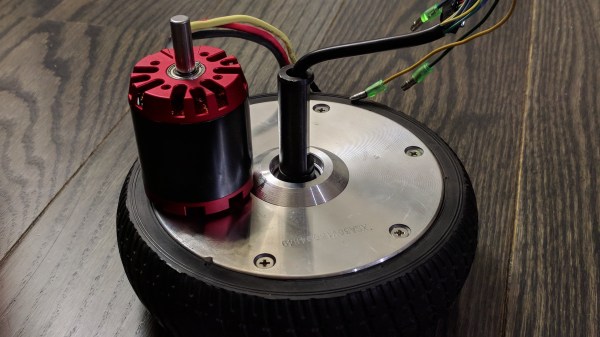
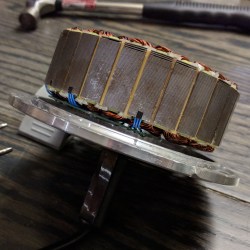 [madcowswe] starts by pointing out that the entire premise of ODrive (an open-source brushless motor driver board) is to make use of inexpensive brushless motors in industrial-type applications. This usually means using hobby electric aircraft motors, but robotic applications sometimes need more torque than those motors can provide. Adding a gearbox is one option, but there is another: so-called “hoverboard” motors are common and
[madcowswe] starts by pointing out that the entire premise of ODrive (an open-source brushless motor driver board) is to make use of inexpensive brushless motors in industrial-type applications. This usually means using hobby electric aircraft motors, but robotic applications sometimes need more torque than those motors can provide. Adding a gearbox is one option, but there is another: so-called “hoverboard” motors are common and 